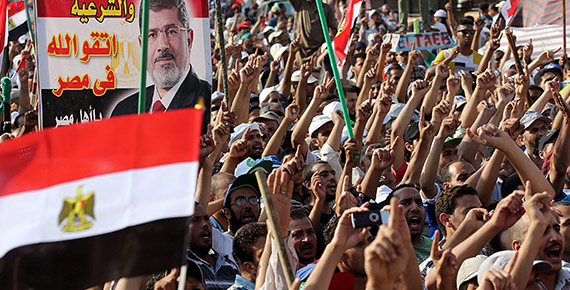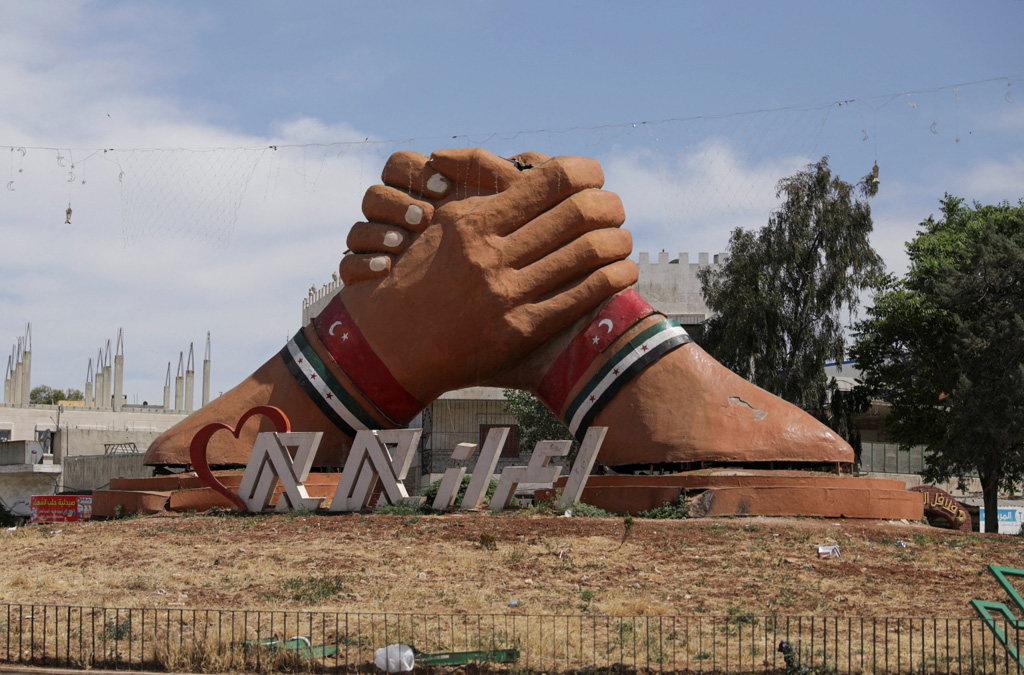Following the statement issued by the army, a new period has begun in Egypt. The Islamic movements are getting ready to organize big protests.
From the Gaza border Rafah, to the Libyan border Sellum, From Alexandria to Asvan and Luxor, hundreds of thousands of people are expected to take the streets today.
After yesterday’s ultimatum given by the army, tens of thousands of people poured into the streets of the capital Cairo and some other cities as the celebration continued in the Tahrir Square and in front of the Ittihadiya Presidential Palace until the dawn.
The ultimatum, which is interpreted as the revenge of the January 25 Tahrir Revolution, the attempt to interrupt the democratization process and the return of the old regime’s remnants have caused reactions among the members of the Islamic movements and sympathizers representing the majority of the people.
In the Parliamentary elections held in early 2012, the parties representing Islamic movements had won 71 percent of the votes and this will help us understand the magnitude of the crowds in the streets.
After the statement issued by the army, helicopters hovering over the Tahrir Square flew with the Egyptian flags and participated in the cheer ups of the protestors. Therefore, it is thought that the protest must have been organized by the army.
On the other hand, the military’s warning “implementation of the coup policies will not be allowed” and then the issuance of a second statement reading “this is not a coup detat” have helped people to be relieved.
Expectation from and curiosity about the position of the Presidential Office have increased because President Mohammed Morsi did not issue any statement on the subject and only said that they were evaluating the blueprint. As of last night, a statement by the Presidential Office is expected; however, there is no incoming message yet.
SIX SCENARIOS ABOUT THE NEW PROCESS
About the new process and the road map mentioned in the ultimatum, there are various scenarios, six of which are particularly important:
1. Morsi’s decision to go for an early election and he remains seated until then. This is very difficult however. A significant portion of the people believe the tenure of Morsi has ended.
2. Formation of the Presidential Council and the National Consensus Government. Mohammed al Baradei, Hamdin Sabbahi and Amr Mousa are the names among the administrators of the National Liberation Front, and the military representatives are likely to be included in the Council. If this scenario is agreed, the representatives of the Islamic movement will not want to be singled out.
3. The President of the Constitutional Court presides over the country in this period and a technocratic government is formed. This is known as a suggestion for a transition process offered by the Temerrud (Revolt) movement.
4. The Muslim Brotherhood convinces Morsi to resign and take control over the government. In this case, the Muslim Brotherhood leaving the Presidential Office to the opposition and the military will continue to run the country. If this scenario is accepted, the Islamic movements will take hundreds of thousands people to the streets and organize huge meetings.
5. The Muslim Brotherhood prefers resistance by having consultations with the Salafi movements, such as Jamaat al Islamiyya. This will be a political resistance and the sides will organize meetings and therefore try to show the public opinion and the military that they are supported by the willpower of the people.
6. The scenario of violence and armed clashes. In this case, Egypt is dragged into an environment of chaos as in Algeria and Afghanistan. This is a scenario prepared by the external forces, so it is said. However, the Egyptian media continue to write and talk about this scenario.
MORSI’S A YEAR OF PRACTICES
Before Morsi took office, the Supreme Military Council govern







